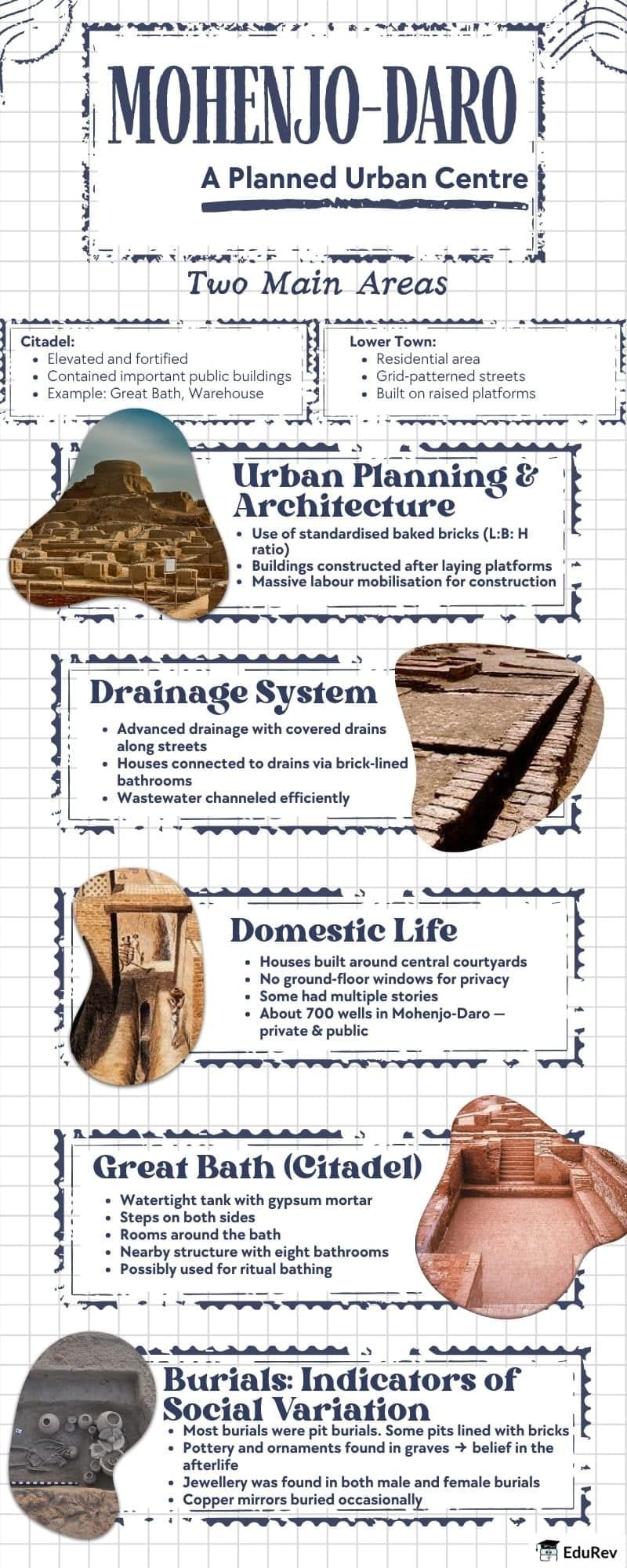Humanities/Arts Exam > Humanities/Arts Notes > History Class 12 > Infographic: Bricks, Beads and Bones
Infographic: Bricks, Beads and Bones | History Class 12 - Humanities/Arts PDF Download

The document Infographic: Bricks, Beads and Bones | History Class 12 - Humanities/Arts is a part of the Humanities/Arts Course History Class 12.
All you need of Humanities/Arts at this link: Humanities/Arts
|
30 videos|274 docs|25 tests
|
FAQs on Infographic: Bricks, Beads and Bones - History Class 12 - Humanities/Arts
| 1. What is the significance of bricks, beads, and bones in understanding ancient human societies? |  |
Ans. Bricks, beads, and bones serve as crucial artifacts that provide insights into the daily lives, social structures, and cultural practices of ancient human societies. Bricks often indicate the development of urban centers and architectural techniques, beads can reveal trade networks and social status, while bones provide information about diet, health, and burial practices.
| 2. How did the materials used in ancient artifacts reflect the technological advancements of their time? |  |
Ans. The materials used in ancient artifacts, such as bricks, beads, and bones, reflect the technological advancements of their time. For example, the invention of fired bricks marked a significant leap in construction technology, while the crafting of beads from various materials showcased advancements in decorative arts and trade practices. Bones, often used for tools or ornaments, indicate the resourcefulness of early humans in utilizing available materials.
| 3. What role did trade play in the distribution of artifacts like beads and bricks in ancient cultures? |  |
Ans. Trade played a pivotal role in the distribution of artifacts such as beads and bricks across ancient cultures. Beads made from exotic materials often traveled long distances, indicating trade routes and interactions between different societies. Similarly, the exchange of building techniques and materials for bricks facilitated the spread of architectural styles and urban planning concepts.
| 4. How do archaeologists interpret the findings of bricks, beads, and bones in their research? |  |
Ans. Archaeologists interpret the findings of bricks, beads, and bones by analyzing their context within excavation sites. They examine the location, layering, and association of artifacts to reconstruct past human behaviors, social structures, and environmental conditions. Radiocarbon dating and other scientific methods help establish timelines, while comparative analysis with similar artifacts from other sites contributes to broader historical narratives.
| 5. What ethical considerations arise when studying human remains in archaeology? |  |
Ans. Ethical considerations in studying human remains include respecting the cultural and spiritual beliefs of descendant communities. Archaeologists must navigate issues of consent, repatriation, and the treatment of remains with dignity. Engaging with local communities and ensuring transparency in research practices are essential to addressing these ethical challenges.
Related Searches





















